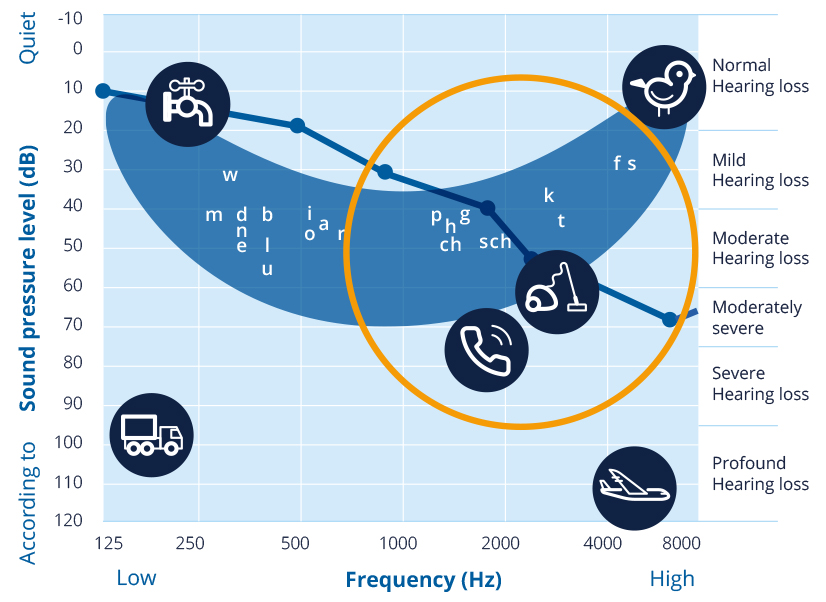
Audiogram
Useful knowledge about the tone audiogram
The tone audiogram is a detailed graphical representation of hearing in an auditory curve. With the help of this measurement, the causes of hearing loss and hearing impairment can be determined quickly and easily. Both an ear, nose and throat specialist or a resident acoustician can carry out a hearing test to check your hearing sensation.
Below you will find all the important information about the hearing test. It explains what an audiogram is, how it is created and what the doctor or acoustician can read from the results. You want to test your hearing and do a hearing test. No problem! We would be happy to make an appointment for a hearing test near you.
Table of Contents
- What is an audiogram?
- Creating an audiogram
- Interpreting an audiogram
What is an audiogram?
An audiogram records what is known as the hearing threshold for different frequencies – this is the range at which the human ear can just barely perceive a sound. There is a ready-made form for this: The pitch (frequency in Hz) is recorded horizontally, the volume in dB is recorded vertically.
The zero line in the audio audiogram corresponds to the hearing threshold of a normal-hearing adolescent. A distinction is made between two different values in the measurement. On the one hand, there is air conduction, in which the sound moves from the outer ear through the middle ear into the inner ear. This is what we typically mean by the term “hearing”. There is also bone conduction, in which the vibrations reach the inner ear via the skullcap. Normally, these signals are superimposed in the ear by the air duct. However, if this is damaged, hearing aids can be adjusted so that they can use and strengthen bone conduction. However, this requires a much higher volume (approx. 50 dB more than airborne sound).
Creating an audiogram
The patient is first put on headphones. Then the acoustician begins to play a single tone – starting with a frequency of 1000 Hz, which is usually easily recognized by healthy ears – and amplifies it in steps of 5 dB until it is heard by the patient. Then continue with further frequencies and mark the hearing threshold in each case.
After this has been done on both ears, the patient is given a bone conduction receiver – it sits directly on the skull bone. Now the hearing thresholds of the bone conduction can be determined analogously to the air conduction. In this relative representation one then obtains – separately for each ear – hearing threshold curves for the air conduction and for the bone conduction by connecting the auditory threshold points.

Interpreting an audiogram
With the help of the tone audiogram, different forms of hearing loss can be distinguished: As already mentioned, there is air conduction, in which the sound travels through the outer, middle, and inner ear, and bone conduction, in which the sound signals are conducted via the cranial bones. If sounds are badly perceived via the air conduction but are perceived well via the bone conduction, the expert speaks of a sound conduction disorder. This can be caused by anything that hinders the sound on its way from the outer ear to the inner ear, for example, a foreign body in the ear canal, an effusion in the middle ear, or a problem with the transmission of the sound from the eardrum via the ossicles. The ear, nose, and throat specialist can often find the cause of this conductive hearing loss relatively easy to handle.
If this is not the case, hearing aids can also be used. Hear.com will be happy to advise you in this case.
In contrast, there is the sensorineural disorder, which has its origin in the inner ear or the related nervous circuitry. Here, the hearing curves in the tone audiogram run parallel for both the bones and the air conduction – but the individual hearing thresholds are well above the limits of people with normal hearing.





